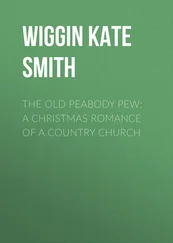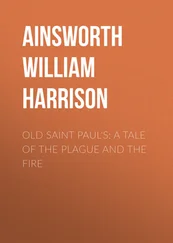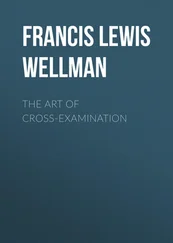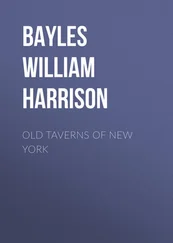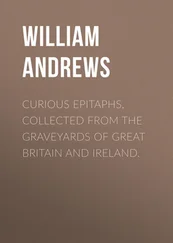William Andrews - Old Church Lore
Здесь есть возможность читать онлайн «William Andrews - Old Church Lore» — ознакомительный отрывок электронной книги совершенно бесплатно, а после прочтения отрывка купить полную версию. В некоторых случаях можно слушать аудио, скачать через торрент в формате fb2 и присутствует краткое содержание. Жанр: foreign_antique, foreign_prose, на английском языке. Описание произведения, (предисловие) а так же отзывы посетителей доступны на портале библиотеки ЛибКат.
- Название:Old Church Lore
- Автор:
- Жанр:
- Год:неизвестен
- ISBN:нет данных
- Рейтинг книги:3 / 5. Голосов: 1
-
Избранное:Добавить в избранное
- Отзывы:
-
Ваша оценка:
- 60
- 1
- 2
- 3
- 4
- 5
Old Church Lore: краткое содержание, описание и аннотация
Предлагаем к чтению аннотацию, описание, краткое содержание или предисловие (зависит от того, что написал сам автор книги «Old Church Lore»). Если вы не нашли необходимую информацию о книге — напишите в комментариях, мы постараемся отыскать её.
Old Church Lore — читать онлайн ознакомительный отрывок
Ниже представлен текст книги, разбитый по страницам. Система сохранения места последней прочитанной страницы, позволяет с удобством читать онлайн бесплатно книгу «Old Church Lore», без необходимости каждый раз заново искать на чём Вы остановились. Поставьте закладку, и сможете в любой момент перейти на страницу, на которой закончили чтение.
Интервал:
Закладка:
The unfortunate widow was buried, but tongues and brains were not set at rest, for it was the opinion of not a few that she had met her death at the hands of a murderer. Amongst the active in this matter was a leading local magistrate, named Mr. Ware, Hestercombe House, near Taunton. Like other people of this period, he believed in the ordeal by touch. “This active magistrate,” we find stated, “caused the body to be disinterred, that all the inhabitants living within a circle of three miles might assemble to touch the body, and go through this powerful ordeal. Babb ran away to escape this dreadful mode of testing the inhabitants’ innocence. His racking conscience gave him no repose; he returned and yielded himself up to justice.” At the next county assizes for Somerset, held at Chard, in the year 1613, he was tried, found guilty, and condemned to death. Shortly afterwards he was hanged near Wambrook.
Charles I. presented to Dr. Wren, the father of the famous Sir Christopher Wren, the rectory of Great Haseley, near Oxford. During his incumbency, occurred a sad event, which made a great impression on his mind. He detailed, in Latin, particulars of the matter, and duly attested the truth by signing it. Lucy Phillimore, the author of an ably-written work on “Sir Christopher Wren: his Family and his Times,” supplies an English version of the tragedy. “Among the retainers of Lord Norris,” we are told, “was an old man who had charge of the fish ponds; he had one nephew, who was the heir of all his uncle’s possessions and savings. The nephew enticed the old man out one night, waited till he fell asleep under an oak tree, murdered him by a blow on the head, dragged the body to one of the ponds, tied a great stone to the neck, and threw the corpse in. There it lay five weeks, during which time Lord Norris and all the neighbours wondered what had become of the old man. At length, attracted to the spot by the swarms of flies, the body was found by the men who were about to clean the pond. They raised the corpse with great difficulty, and recognised it. The stone tied to the neck was evidence of foul play, though no one could guess the murderer. Lord Norris, in order to detect the criminal, after the usual manner, commanded that the corpse, preserved by the water from the last extremity of decay, should, on the next Sunday, be exposed in the churchyard, close to the church door, so that every one entering the church should see and touch it. The wicked nephew shrank from the ordeal, feigning to be so overwhelmed with grief as to be unable to bear the sight of his dearest uncle. Lord Norris, suspecting that the old man had been murdered by the one person whom his death would profit, compelled him to come, and to touch with his finger, as so many had willingly done, the hand of the dead. At his touch, however, ‘as if opened by the finger of God, the eyes of the corpse were seen by all to move, and blood to flow from his nostrils.’ At this awful witness, the murderer fell on the ground and avowed the crime, which he had secretly committed, and the most just judgment of God had brought to light.” The murderer was tried before one of His Majesty’s judges, and the circumstances of the crime fully stated. He was condemned to death, and the sentence was duly carried out by the hangman.
Another strange story comes down to us from the days when the first Charles was king. It relates to Herefordshire. Johan Norkeff was found dead, and it was believed that she had laid violent hands upon herself. After she had been buried about a month, circumstances caused it to be suspected that she had met her death by foul play. The case came under the consideration of a coroner and jury, and they finally resolved to have the body exhumed, and cause the four suspected persons to touch it. The result of the ordeal was narrated at the assizes by an old minister as follows: “The body being taken out of the grave and laid on the grass, the accused were required to touch it. On laying on their hands on the brow, which before was of a livid and carrion colour, it began to have a dew or gentle sweat upon it, which increased by degrees until the sweat ran down the face. The brow then turned to a lifelike and flesh colour, and the dead woman opened one of her eyes and shut it again, and this opening of the eye was done three times. She likewise thrust out the ring or marriage finger three times, and the finger dropped blood on the grass.” The old minister swore to the correctness of the foregoing, and, says James Grant, in “The Mysteries of all Nations,” from whom we draw the evidence, another clergyman corroborated it. Sir Nicholas Hyde, the eminent lawyer, who rose to be Lord Chief Justice, questioned the correctness of the evidence, but the members of the jury did not agree with him, finding three of the prisoners guilty of murder. Two were executed, and the third, a woman, was reprieved.
On much weaker evidence to the preceding cases, Philip Stanfield was condemned, in 1688, for the murder of his father, Sir James Stanfield. An account of the matter will be found in Chambers’s “Domestic Annals of Scotland,” vol. 2, pages 491-92. The case may be briefly stated as follows: The body of Sir James Stanfield, of New Mills, was found in a stream near Haddington. It appeared that he had met his dead by strangling. James Muirhead, a surgeon, and another person swore that when Philip Stanfield was helping to place the body of his father in a coffin, blood started from the left side of his neck upon his touch, and that he exclaimed, “Lord have mercy upon me!” On this slight evidence he was, 7th February, 1688, pronounced guilty of parricide, and was publicly executed on the 24th of the same month, and his body hung in chains. He protested his innocence to the last. “The whole case,” says Dr. Robert Chambers, “seems to be a lively illustration of the effect of superstitious feeling in blinding justice.”
On the 14th June, 1641, a commission which sat at Dalkeith, pronounced Christina Wilson guilty of the death, by sorcery, of her brother, Alexander Wilson. She had been, prior to the trial, directed by the minister and others to touch the corpse of her brother. After an earnest prayer, in which she fervently prayed to God, who had made the sun to shine on their home, to bring the murderer to justice, she touched the body. It bled, although it had not done so when touched by others. This was deemed sufficient proof of her guilt, and on this evidence she suffered death.
With directing the attention to the survival of touching the dead, we must draw to a close our study of the romance of trial. In the north of England, and other parts of the country, it is the practice of persons who come to see a corpse to touch it, as a token “that they wished no ill to the departed, and were at peace and amity with them.”
A Fight between the Mayor of Hull and the Archbishop of York
The prelates of the past enjoyed not a few peculiar privileges which are not inherited by their successors in modern times. In the mediæval era, the dignitaries of the church led comparatively exciting lives, and were by no means strangers to the use of sword and lance, many gaining fame on the field of battle.
Representatives of the church often possessed rights in respect to the gallows and its victims. A few facts about a case occurring far back, in the days of our first Edward, shew how keenly they maintained their privileges. The Abbot of Peterborough set up a gallows at Collingham, Nottinghamshire, and had hanged thereon a thief. This proceeding came under the notice of the Bishop of Lincoln, and he, with considerable warmth and temper, declared that the Abbot had usurped his rights, since he held from the king’s predecessors the liberty of the Wapentake of Collingham, and the right of executing criminals. The Abbot declared that Henry III. had given to him and his successors “Infangthef and Utfangthef in all his hundreds and demesnes.” After investigation it was decided that the Abbot was in the wrong, and he was directed to take down the gallows he had erected. One, and perhaps the chief, reason of the prelate being so particular to retain his privileges was on account of it entitling him to the chattels of the condemned criminals.
Читать дальшеИнтервал:
Закладка:
Похожие книги на «Old Church Lore»
Представляем Вашему вниманию похожие книги на «Old Church Lore» списком для выбора. Мы отобрали схожую по названию и смыслу литературу в надежде предоставить читателям больше вариантов отыскать новые, интересные, ещё непрочитанные произведения.
Обсуждение, отзывы о книге «Old Church Lore» и просто собственные мнения читателей. Оставьте ваши комментарии, напишите, что Вы думаете о произведении, его смысле или главных героях. Укажите что конкретно понравилось, а что нет, и почему Вы так считаете.



